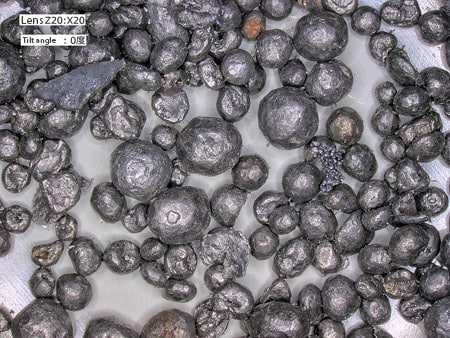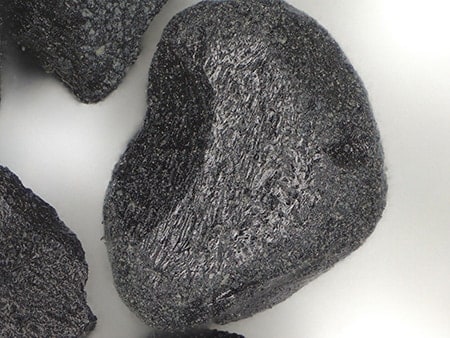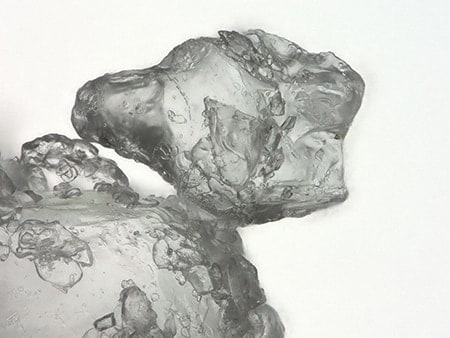Observation and Measurement of Powders Using Digital Microscopes
Granular material is a collective term for aggregations of solid particles including powder materials. Generally, granular materials larger than 1 mm are called grains and those smaller than 1 mm are called powders. Its shape and volume can be freely changed. Therefore, it can be said that powders are solids with liquid and gas properties. This section provides an overview of powders, explains their properties, and introduces examples of their observation and measurement using digital microscopes.

- Particle Size Distribution of Powders
- Fluidisation of Powders
- Fluidity of Powders
- Observation and Measurement Examples of Powders Using Digital Microscopes
Particle Size Distribution of Powders
The particle diameter of a powder varies and the degree of variation is called the particle size distribution.
Particle size distributions are usually expressed graphically with the particle diameter [μm] on the horizontal axis and the frequency [%] on the vertical axis.
Particle size distribution and typical powder examples
- Normal distribution
-
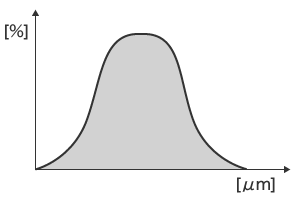
Typical example: Powdered activated carbon
- Large particle diameter and small particle diameter (two peaks)
-

Typical example: Powders that clump easily
- Even diameter
-
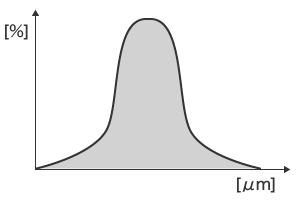
Typical example: Toners
- Large particle diameter
-

Typical example: Sand, sugar, salt
- Small particle diameter
-
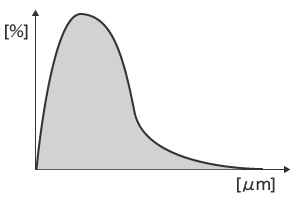
Typical example: Titanium oxide, pigments, dyes
Fluidisation of Powders
Powders that exhibit a normal particle size distribution are likely to retain air and thus are easy to fluidise. On the other hand, powders composed of particles with similar diameters are hard to fluidise because air passes between the particles.
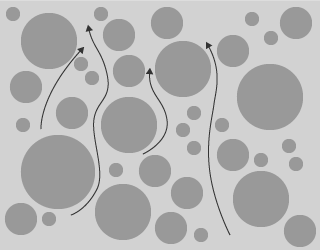

Fluidity of Powders
The angle between the horizontal plane and the sloping plane is called the angle of repose. Powders with a high fluidity have a small angle of repose, while those with a low fluidity have a large angle of repose.
Powders with a high fluidity often have large particles, such as sand. These powders spread on the horizontal plane and slump when piled in a conical shape.

Powders with a low fluidity, such as wheat flour, do no spread on the horizontal plane, maintaining their shapes when piled in a conical shape. Powders with a low fluidity are hard to discharge from hoppers and silos, and may form bridges or ratholes.
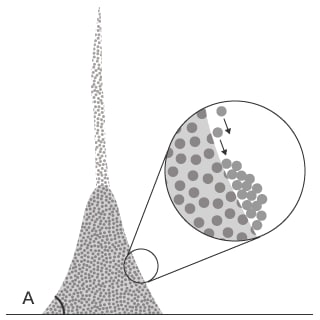
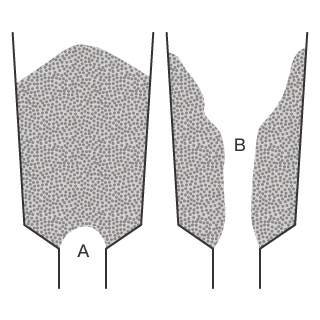
- A: Bridge
- B: Rathole
Observation and Measurement Examples of Powders Using Digital Microscopes
These are the latest examples of observation and measurement of powders using KEYENCE’s VHX Series 4K Digital Microscope.


The depth composition function allows for observation of all particle surfaces in focus.


The automatic area measurement function makes analysis efficient.
